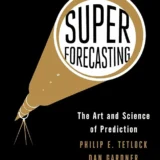Alvaro Mejia, a Peruvian documentarian, contacted us here at Amazing HQ the other day, requesting the use of some illustrations that have appeared in back issues of Amazing Stories.
This is not an unusual request and our response has become pretty pat: we don’t own the content. Some of it is in the public domain. If you acquire the rights (or don’t need to), we can help with scans and frequently with identifying the artist. If you are going to use the name – AMAZING STORIES® – depending upon usage we may need to work out a license (though, generally, for things like museum exhibits, we look for acknowledgement and a presentation that is brand-positive), which is pretty much the initial response provided to Alvaro, until we learned what his documentary was all about.

 Later this year, Peru will launch its first satellite – PeruSat1 – into orbit aboard a Vega launch vehicle from the ArianeSpace facility in French Guyana. (Peruvian mini-sats were previously orbited via spacewalk from the ISS).
Later this year, Peru will launch its first satellite – PeruSat1 – into orbit aboard a Vega launch vehicle from the ArianeSpace facility in French Guyana. (Peruvian mini-sats were previously orbited via spacewalk from the ISS).
This advance in the Peruvian space program has generated a great deal of interest in space, including the contributions of one of that country’s citizens that have gone largely unrecognized – until now.
As evidenced by this brief popsci article on the history of rocketry, found on the NASA website:
In 1898, a Russian schoolteacher, Konstantin Tsiolkovsky (1857-1935), proposed the idea of space exploration by rocket. In a report he published in 1903, Tsiolkovsky suggested the use of liquid propellants for rockets in order to achieve greater range. Tsiolkovsky stated that the speed and range of a rocket were limited only by the exhaust velocity of escaping gases
~
Goddard’s earliest experiments were with solid-propellant rockets. In 1915, he began to try various types of solid fuels and to measure the exhaust velocities of the burning gases. While working on solid-propellant rockets, Goddard became convinced that a rocket could be propelled better by liquid fuel. No one had ever built a successful liquid-propellant rocket before. It was a much more difficult task than building solid- propellant rockets. Fuel and oxygen tanks, turbines, and combustion chambers would be needed. In spite of the difficulties, Goddard achieved the first successful flight with a liquid- propellant rocket on March 16, 1926. Fueled by liquid oxygen and gasoline, the rocket flew for only two and a half seconds, climbed 12.5 meters, and landed 56 meters away in a cabbage patch.
(date emphasis added)
That’s pretty much how we all learned our history of rockets; throw in the bits about the Chinese and gunpowder, the mythical Wan Hu and his disappearing rocket-chair, close with Werner von Braun and his V2, and you pretty much know everything there is to know about How We Got to the Moon and Then Never Went Back.
Except for reality.
 Reality is that in 1895, one Pedro Paulet, a Peruvian college student, built and successfully tested a liquid fueled rocket engine that could run for an hour.
Reality is that in 1895, one Pedro Paulet, a Peruvian college student, built and successfully tested a liquid fueled rocket engine that could run for an hour.
Any modern rocket scientist would recognize that Pedro had anticipated the vast majority of engineering requirements necessary simply from looking at his design diagrams:

As a diplomat, Paulet had the opportunity to travel to Europe (where most of the pioneering work on rocketry was being conducted at the time) and there is evidence that he shared his work with members of a Parisian rocket club and with various scientists working with German rocketry. None other than Werner von Braun is quoted in The World History of Aeronautics as saying:
“Pedro Paulet was in Paris in those years (1900), experimenting with his tiny two-and-a-half kilogram motor, and achieved 100 kg of force. By this act, Paulet should be considered the pioneer of the liquid fuel propulsion motor.”
In his own book History of Rocketry and Space Travel, von Braun recognizes that “by his efforts, Paulet helped man reach the Moon.”
And now Alvaro is going to set the record straight with his documentary Paulet. El niño que soñaba con la Luna (Paulet: The Boy Who Dreamed of the Moon). Amazing Stories is proud to be of whatever small assistance we can contribute.
You can watch a trailer for the documentary which is forthcoming this August:
We’ll let you know when the documentary has been released.
Read My Profile











